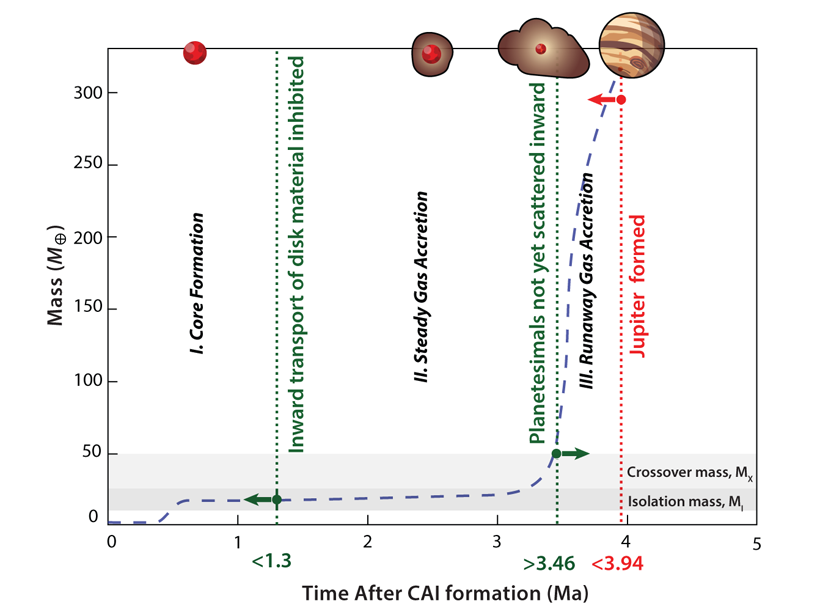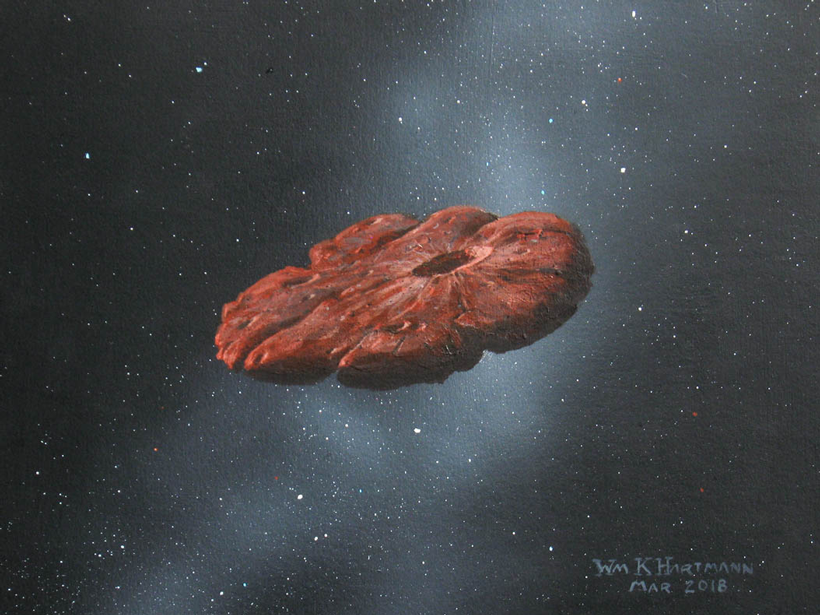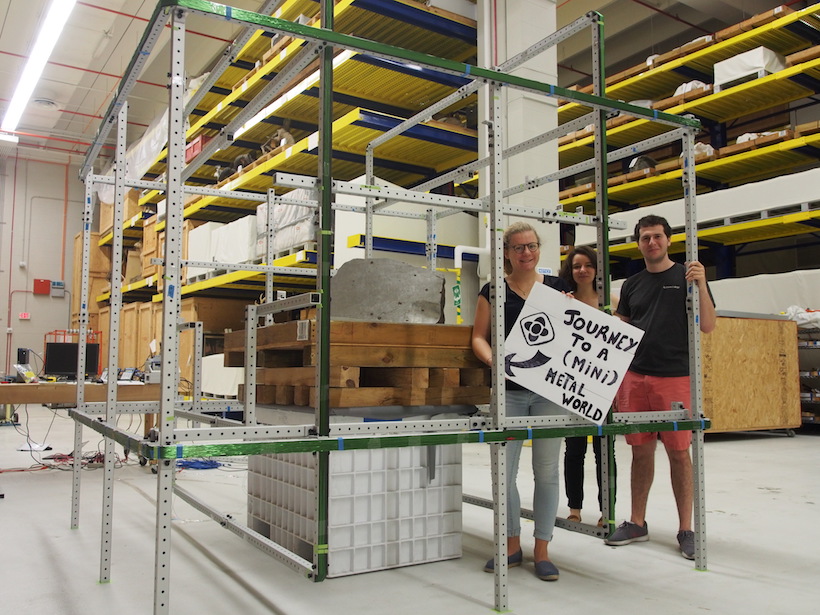Meteorite isotopes, meteorite paleomagnetics, and planet formation models collectively show Jupiter formation via first slow then fast collection of material by core accretion in <5 million years.
solar system
Martian Meteorites Shed Light on Solar System’s Early Dynamics
Chemical compositions of rocks from Mars indicate that the earliest orbits of Jupiter and Saturn were more circular than they are today.
‘Oumuamua May Be an Icy Fragment of a Pluto-Like Exoplanet
Researchers favor nitrogen ice as the most likely material for the mysterious interstellar object’s composition.
Wind: Discoveries and Impacts of a Venerable Spacecraft
Wind has been one of the most robust, diverse, long-lasting, and impactful heliophysics missions ever to have been carried out.
Dawn Storms at Jupiter
Juno spacecraft observations provide the first global description of dawn storms in Jupiter’s aurorae, from their initiation to their end.
Radio on Jupiter, Brought to You by Ganymede
Another first from NASA’s Juno spacecraft: the detection of Jupiter radio emissions influenced by the moon Ganymede, over a range of about 250 kilometers in the polar region of Jupiter.
A Field Guide to the Magnetic Solar System
Not all planets move the needle. But whatever planet you take a magnetic compass to, it’s sure to point out clues to secrets underfoot.
Measuring Massive Magnetic Meteorites
A new tool to measure the magnetic signatures of big meteorites could not only aid NASA’s mission to Psyche; it could also help solve mysteries about how magnetic fields formed in our early solar system.
Traces of Impacts on Warm Planetesimals Early in Solar System
Meteorite NWA 11004 contains evidence of melting preceding an impact dated to 4546±36 Ma. Short lived radioactive decay had already heated the parent body of this meteorite before the impact.
Jupiter’s Ocean Moons Raise Tidal Waves on One Another
New research considers the effect of Jupiter’s Galilean moons on each other’s oceans for the first time.










